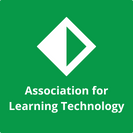Findings from the 2016 ALT Annual Survey [1]

 [2]This report presents findings from the third Association for Learning Technology (ALT) Annual Survey. Results of the survey are openly published each year in spring. Both the ALT Annual Survey and anonymised survey responses are shared openly in the ALT Repository [3].
[2]This report presents findings from the third Association for Learning Technology (ALT) Annual Survey. Results of the survey are openly published each year in spring. Both the ALT Annual Survey and anonymised survey responses are shared openly in the ALT Repository [3].
The survey is designed to:
-
Understand current and future practice
-
Show how Learning Technology is used across sectors
-
Help map the ALT strategy to professional practice to better meet the needs of and represent our Members.
As with previous years, the survey was advertised predominately to ALT Members but at the same time promoted publically, and responses were collected between December and January.
In total 245 responses have been analysed, 88% (n. 216) of these being submitted by ALT Members. The ALT Annual Survey contains a common core of questions asked in all annual surveys. This year the survey was supplemented with additional questions specifically aimed at informing the new ALT Strategy 2017–2020.
Current and future priorities
As with the ALT Annual Survey 2015, ‘Content Management Systems and VLEs’ and ‘Electronic assessment’ remain to be the top two areas of importance within current practice. This year saw ‘Collaborative tools (e.g. Google Apps, Office365 etc.)’ take the third spot when ranked by importance, this area progressively increasing in importance for three consecutive years. The data also reveals declines in importance within current practice for ‘MOOCs’, ‘Social networking’ and ‘Web conferencing/virtual classroom software’; however, in the latter two areas they both remain highly ranked in importance with current practice.
Looking ahead to future priorities, ‘Data and Analytics (incl. Learning Analytics)’ continue to become increasingly important to respondents, but ‘Content Management Systems and VLEs’ and ‘Electronic assessment’ remain the top two future priorities. Ranked third in terms of future importance was ‘Web conferencing/virtual classroom software’ despite it loosing importance within current practice. Both ‘Plagiarism detection’ and ‘Social Networking’ saw small declines when comparing responses for current and future importance. The areas respondents most noted not listed in the survey were ‘Augmented/Virtual Reality’ and ‘Blended Learning’.
Enablers and drivers for use of Learning Technology
Like last year the top three enablers/drivers for use of Learning Technology were ‘Engagement from students/learners’, ‘Colleagues' knowledge/expertise’ and ‘Colleagues' commitment’. Comparing responses to previous surveys, the enabler/driver that has seen the greatest increase is ‘Staff development opportunities’, which has gone from 55% ‘agree/strongly agree’ in 2014 to 67% in 2016.
Commenting on the survey results Martin Hawksey, Chief Innovation and Community and Technology Officer (ALT) said:
A number of the ALT Annual Survey questions have now been asked for three consecutive years and provide a valuable insight into both the trends within educational technology and drivers for its use.
Results of the survey are openly published each year in spring. Both the ALT Annual Survey and anonymised survey responses are shared openly in the ALT Repository [3].
